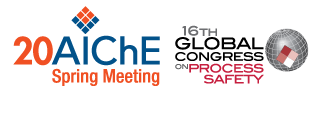

A structured Operational Excellence program begins with clear definitions for:
- What’s important?
- Who’s responsible for action, who’s accountable for success?
- How is success measured?
- How are excursions identified, monitored, and corrected?
- What communications are necessary to ensure improvement?
- What skills and tools are necessary to continuously improve?
Compelling events for transformation may include regulatory compliance, hazard recognition, sustainability, cost controls, quality improvements, and asset reliability as examples. The data required covers the spectrum of real-time operational data, environmental monitoring, quality data, and asset information. A connected infrastructure runs from edge connected IoT devices to the cloud, sharing information across individual assets, plants, enterprises, and communities of connected services.
However, the final transformation does not have to be the first implementation. Like any solution, digital tools evolve as our needs and understanding of the problem change. Our use of the data infrastructure will necessarily evolve by:
- Collecting data into the data historian
- Contextualizing an operational “chart of accountsâ€
- Integrating with external data sources such as LIMS, ERP, CMMS, etc.
- Formulating streaming real-time analytics, first law calculations, and KPI’s
- Detecting and notifying on errors and events
- Leveraging complex analytic engines to develop predictive and prescriptive models
Data should be collected once, as close to the source as possible. The data infrastructure will interface with these source systems. As part of the transformation effort, organizations evaluate missing data for the potential value of the information against the expense of collection. Where possible, organizations can leverage IoT technologies or collect manually.
Demonstrated use cases include monitoring site heat index to prevent heat stress, extrapolating corrosion curves to facilitate mechanical integrity programs, performing both golden batch and multivariate analyses, and collecting asset utilization data for reporting among others. Successful digital transformations provide competitive advantages for these enterprises. We believe people with data can transform our world.
Presenter(s)
Language
Pricing
Individuals
| AIChE Member Credits | 0.5 |
| AIChE Pro Members | $19.00 |
| AIChE Graduate Student Members | Free |
| AIChE Undergraduate Student Members | Free |
| Computing and Systems Technology Division Members | Free |
| AIChE Explorer Members | $29.00 |
| Non-Members | $29.00 |
